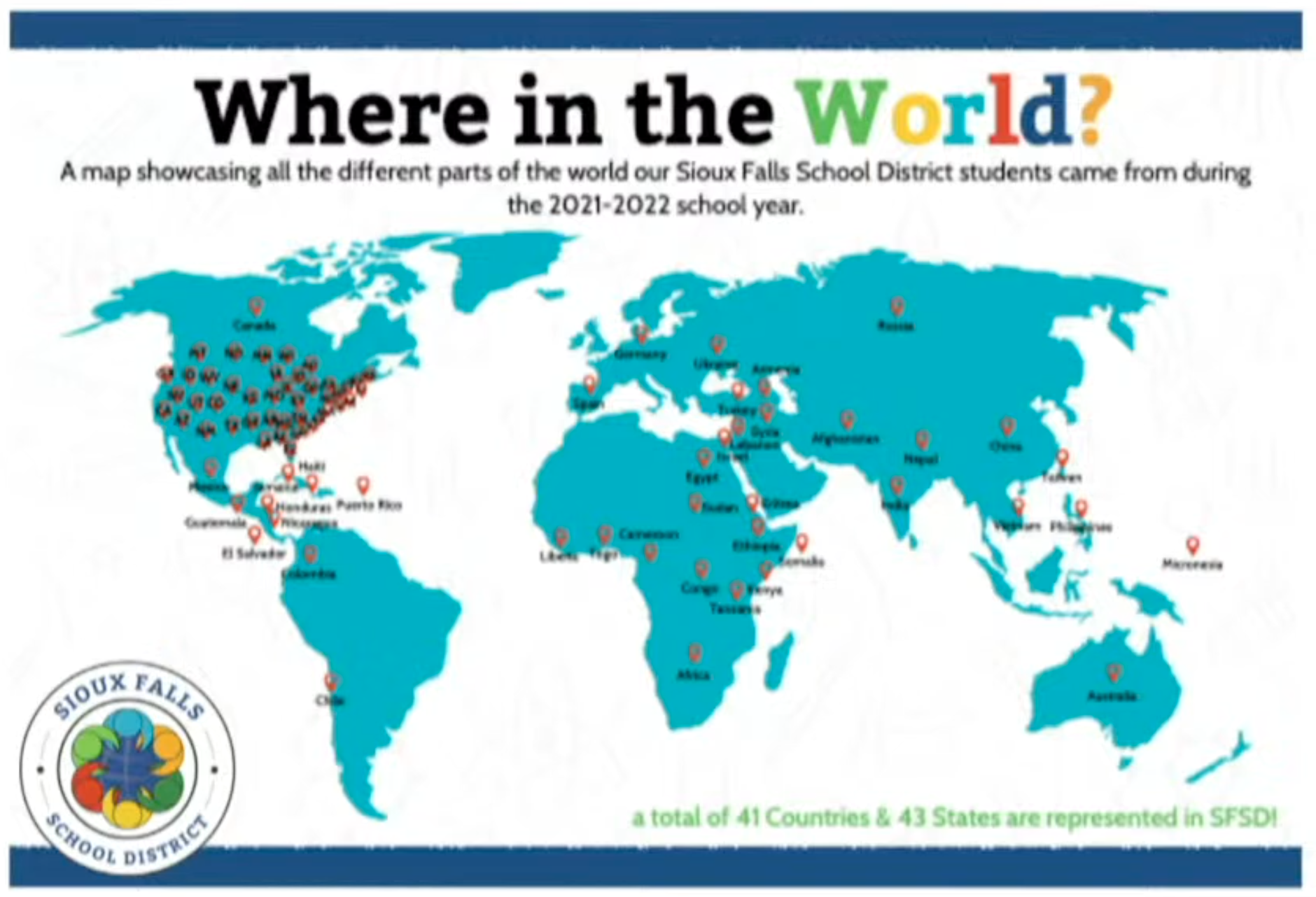Simplified: Sioux Falls school board members this week got to see the latest demographic data for students in the district. The trend? More diversity, thousands of kids with special education needs and dozens of languages spoken.
Why it matters
- School (and city) officials often say that if you want to see the future of Sioux Falls, demographically, look to the K-12 school system.
- This report shows a continued trend of increasing diversity in schools, especially at the elementary level, where about 46 percent of kindergarteners are Black, Indigenous or people of color. That's compared to 34 percent of 12th graders this year.
- The report also shows the number of students receiving special education services. And it shows the percentage of students receiving free or reduced meals – which speaks to the income levels of families in the Sioux Falls School District.
"This gives us just a little more detail … as to who our student population is," Superintendent Jane Stavem told board members Monday.
Ok, so what are some other stats?
Here's a quick look at the highlights from Monday's presentation:
- Students in the district came here from 43 states and 41 countries.
- More than 2,600 students are learning English as a second language – with 77 different languages spoken throughout the district.
- About 46 percent of elementary students receive free or reduced meals.
- Special education programs serve more than 3,800 people from age 3 to 21. (And another nearly 2,700 students are on 504 plans, meaning they also receive some type of special accommodations.)
What happens next?
There's not really a specific action arising from this data. As Stavem said, it gives us more detail about the students in Sioux Falls schools.
That said, the district is continuing to encourage families who are eligible to apply for free or reduced lunches.
- After two years of free lunches for everyone, the number of folks who filled out the forms to continue those free lunches dropped from pre-pandemic levels.
"We continue to work very hard on getting that done," Community Relations Coordinator DeeAnn Konrad said, "but it’s a challenge."


